Rajeswari Chatterjee was the first woman engineer to be appointed on the faculty of IISc. Read on to learn more about her research and legacy
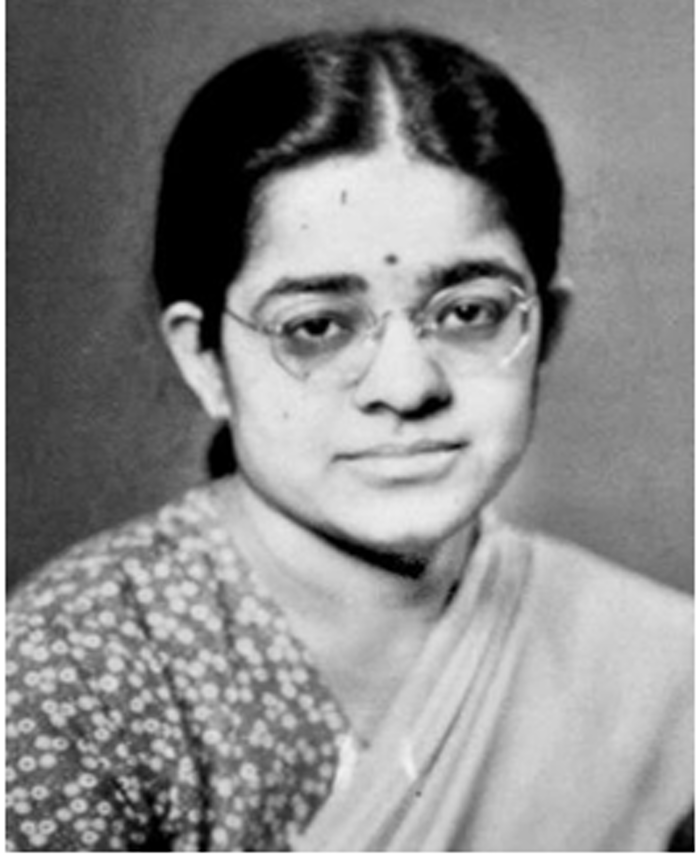
It was the year 1953, and IISc had just appointed Rajeswari Chatterjee – who had arrived in India from the US after her PhD from the University of Michigan – as a faculty member. Chatterjee, the first woman engineer at IISc, joined the Department of Electrical Communication Engineering (ECE), where her husband, SK Chatterjee, was already working. Along with him, she set up India’s first microwave engineering research lab.[i] Microwave research was in its early days, but had developed rapidly during the recently concluded World War II. Together, they introduced courses in microwave technology and satellite communication in the 1960s, and were the first to teach this subject in India. Grants were not plentiful at the time, and they built their lab from scratch, making the instruments and components required for their research using indigenous resources. In a career spanning about 30 years, Chatterjee pioneered research in microwave engineering, wrote several textbooks, mentored many students who went on to have successful careers; she finally retired as the chairperson of ECE in 1981. Her contributions to microwave research are still used in RADAR technology and defense applications by DRDO, and her legacy lives on through the work of her numerous students spread all around the world.
But Chatterjee’s tryst with IISc actually started much earlier, in 1943, when she joined the Institute as a research scholar in SP Chakravarty’s lab at the Department of Electrical Technology, after completing her BSc (Hons.) and MSc in Mathematics and Physics from Central College, Bangalore.[ii] At this time, there were only a handful of women pursuing a career in science. Chatterjee, however, was encouraged by her family, especially her grandmother, to pursue higher studies. In her few years as a researcher in Chakravarty’s lab, Chatterjee worked on electronics, specializing in ultra-high frequency measurements.
In a career spanning about 30 years, Chatterjee pioneered research in microwave engineering, wrote several textbooks, mentored many students who went on to have successful careers; she finally retired as the chairperson of ECE in 1981
In the 1930s and the early 1940s, IISc did have a few women scholars[iii], but their paths were anything but rosy. CV Raman, who served as the Director of IISc from 1933 to 1937, was averse to the idea of having women students. He famously refused to admit Kamala Sohonie into IISc when she applied for a Master’s course in 1933. He eventually took her on as a research associate, but only after she personally convinced him of her exceptionalism.[iv] She later went on to do her doctoral work in Cambridge, and became a celebrated biochemist. Later Raman changed his stance, even admitting three research students to his own research group – Lalita Chandrasekhar, Anna Mani and Sunanda Bai. Though all of them went on to pursue doctoral research, none of them received a PhD! Lalita Chandrasekhar later married S Chandrasekhar (the future Nobel Laureate), and decided against pursuing research herself. Sunanda Bai ended her life tragically under mysterious circumstances, while Anna Mani went on to become a well-known researcher in meteorology.[v]
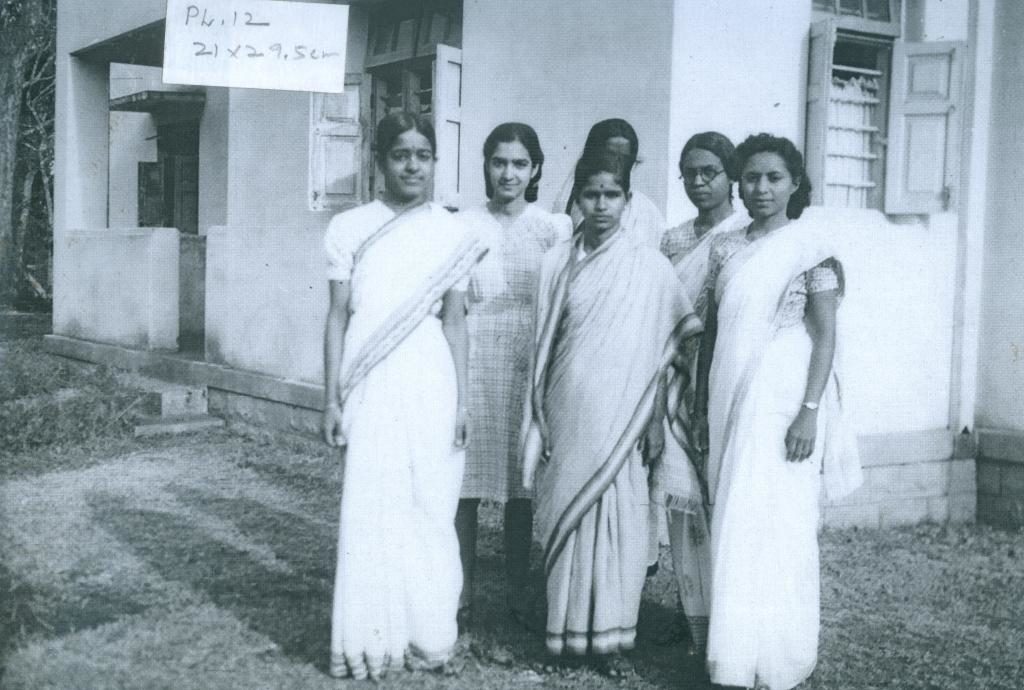
During this period – between 1945 and 1947 – there were also efforts on the part of the interim government in Delhi, which was slowly taking over the reins of power, to encourage the pursuit of science in the country. A scientific committee was set up, consisting of some of India’s best-known scientists, such as Meghnad Saha, SS Bhatnagar, JC Ghosh, KS Krishnan and Homi Bhaba. They prompted the interim government to start a scholarship programme for talented Indian students in science and engineering, both men and women, for research in countries like USA, Britain and Canada. In fact, in 1945, Anna Mani was one of the first recipients, and she went to London for research in physics.
In 1946, Chatterjee too won the scholarship and secured admission for graduate studies in the Department of Electrical Engineering at the University of Michigan, USA. In June 1947, young Chatterjee travelled on board a troopship to go to USA. It was rare for women in those days to travel abroad for studies, but she was not only undaunted, she also enjoyed her journey, which she recounts in her autobiography, A Thousand Streams.
After her return to India, she was back in IISc, but now as a faculty member. Here, she had to fight her way to the top in a male dominated field. BS Sonde, a student and later a colleague of Chatterjee, recollects how everyone respected her analytical skills and admired the way she was able to explain even difficult concepts to students in the class room.[vi] The Chatterjees were very supportive of their students, and students were always welcome at their home. They helped them not only in their educational pursuits, but also with personal problems. Dr. TS Vedavathy, who joined Chatterjee’s lab as a student in 1968 and eventually also became her colleague, reminisces about the support she received from her mentor throughout her graduate life. Chatterjee’s strict demeanour toughened young Vedavathy during her days as a doctoral student. Vedavathy recollects an incident from 1971. She had lost her father three days earlier, when Chatterjee prescribed ‘work therapy’, and urged her to teach an ME class! Though at the time this seemed harsh, she says that she realized later how it helped her overcome her grief.
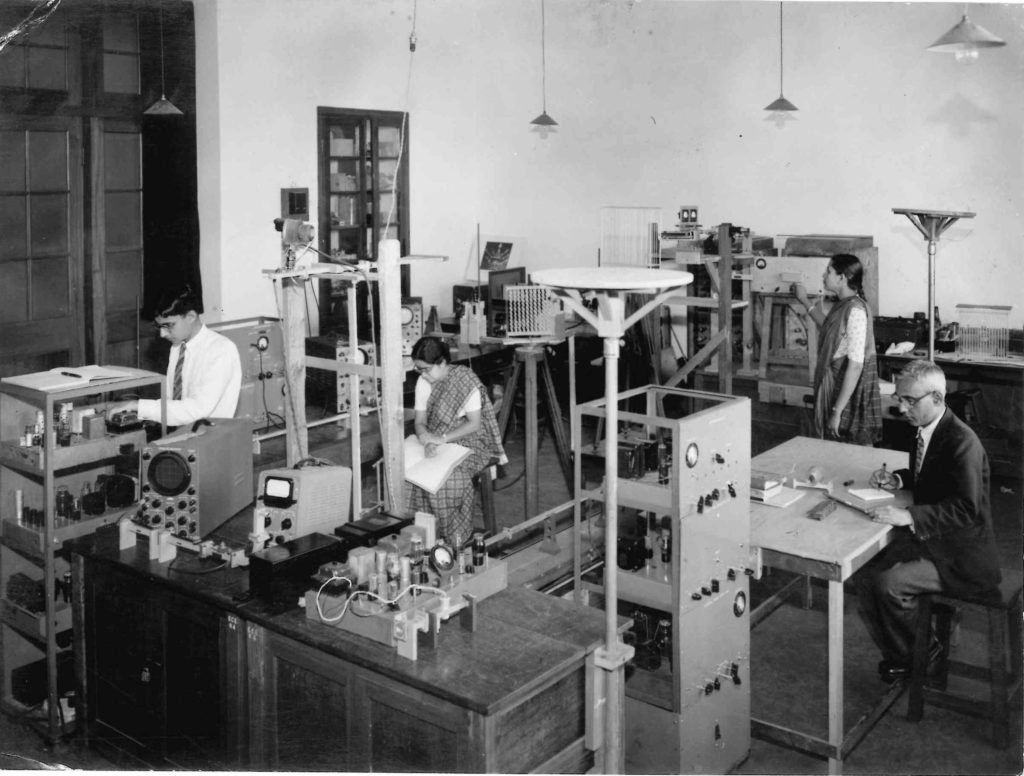
Chatterjee’s research was focused mostly on passive microwave devices – specifically guided and radiated wave devices. Her work is still relevant, especially in the field of defence technology. Her authoritative book on the theory of antenna is still widely read.[vii] It is perhaps a testament to her mentorship and brilliance that so many of her students have also had illustrious careers, both in India and abroad. Besides Sonde and Vedavathy, another student Anand Kumar went on to become a faculty member at ECE; and like their mentor, Sonde and Kumar in fact also headed ECE. Other students she mentored also shone. One of them was RP Shenoy, a former director of the Electronics and Radar Development Establishment (LRDE), a unit under DRDO, and a Padma Shri recipient who was considered the ‘RADAR Pitamaha of India’. Another student, KG Narayanan, went on to become the Director of the Aeronautical Development Establishment (ADE), also a DRDO research facility.[viii]
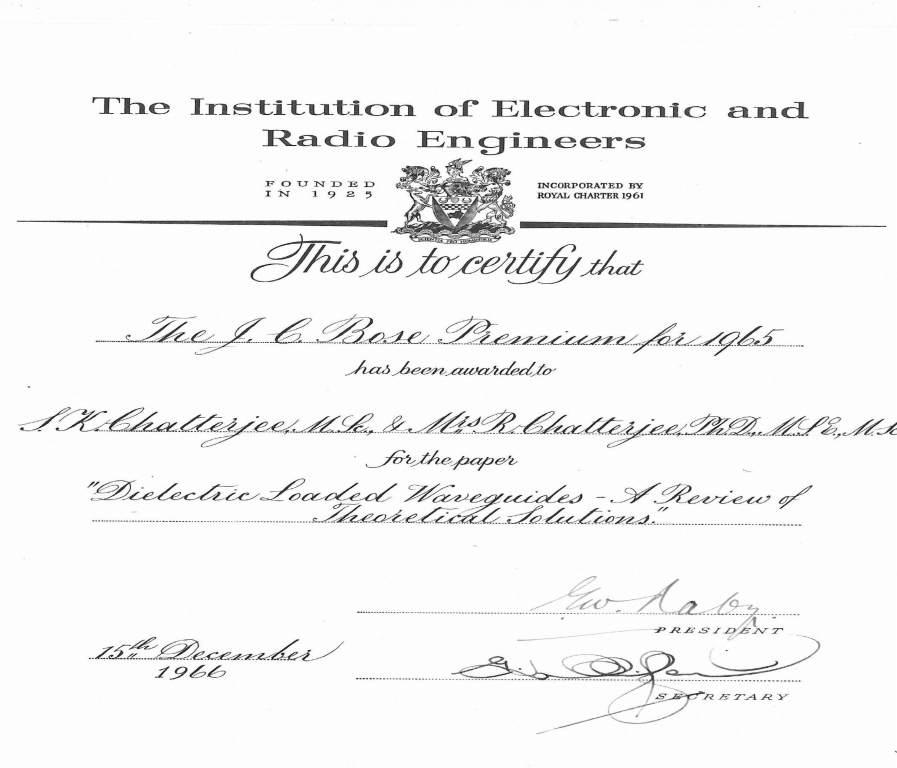
Rajeshwari Chattopadhyay, also a student of SK Chatterjee, who herself became a successful researcher, remembers how there were always more female students in the microwave research lab, perhaps because the Chatterjees’ felt that female students were more sincere and worked harder. According to her, a great source of support through Chatterjee’s life was her husband. Sonde recalls the Chatterjees were “both wedded to work”, and led simple lives until the end. SK Chatterjee died in 1994. But Rajeshwari continued to lead an active life. Chattopadhyay remembers how, even in her 80s, she travelled alone to the US to visit her daughter, a professor in University of Nevada. In 2010, days after her last solo trip to visit her daughter, she collapsed in her house in Malleswaram, and breathed her last on being taken to the hospital.
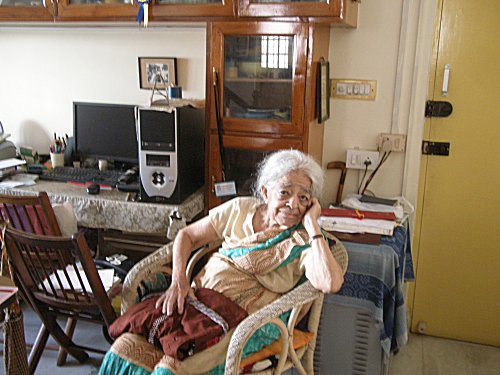
* Sridevi Venkatesan and Subhayan Sahu are fourth year undergraduate students at IISc
Footnotes
[i] Confirmed by Dr. TS Vedavathy, Chatterjee’s student from 1968.
[ii] A Thousand Streams, by Rajeswari Chatterjee, a collection of essays.
[iii] Annual Reports of IISc 1945-47.
[iv] www.indianbotanists.com/2015/03/kamala-sohonie-woman-who-established.html.
[v] Dispersed Radiance: Caste, Gender and Modern Science in India, by Abha Sur.
[vi] Dr. BS Sonde later became a professor at IISc in the ECE department in 1964. He took over as the Chairman of ECE after Chatterjee retired.
[vii] Antenna Theory and Practice, published in 1996.
[viii] According to Dr. Vedavathy and Chandrika Sudhendra, scientist at Aeronautical Development Establishment, DRDO.





1 thought on “Remembering Rajeswari Chatterjee, IISc’s First Woman Engineer”
Dr. Rajeshwari Chatterjee #INWED17 #RaisingProfiles @WES1919 « Adafruit Industries – Makers, hackers, artists, designers and engineers!
(23 June 2017 - 11:00 am)[…] From IISC Connect: […]
Comments are closed.